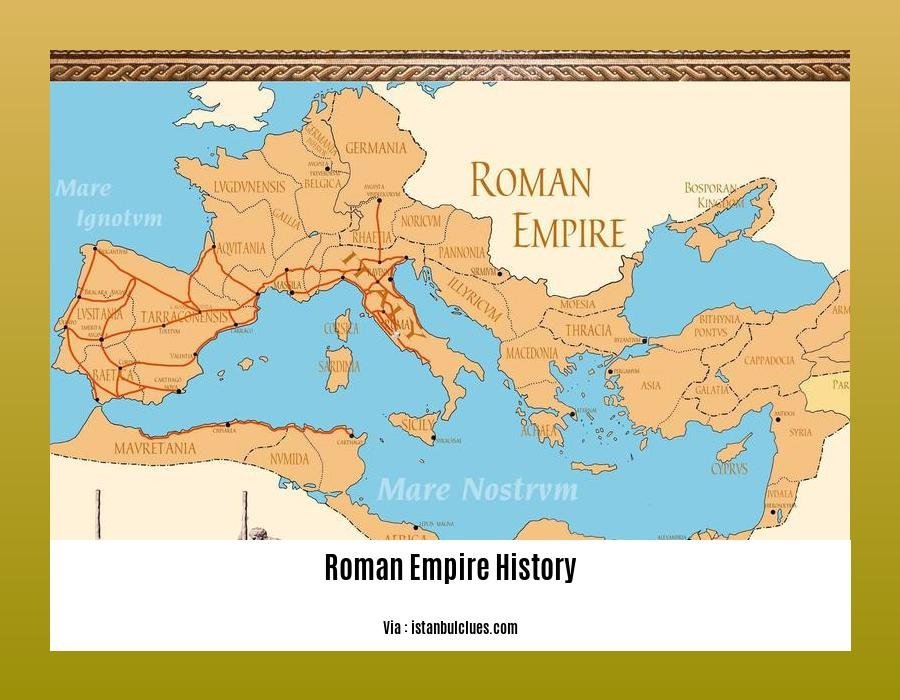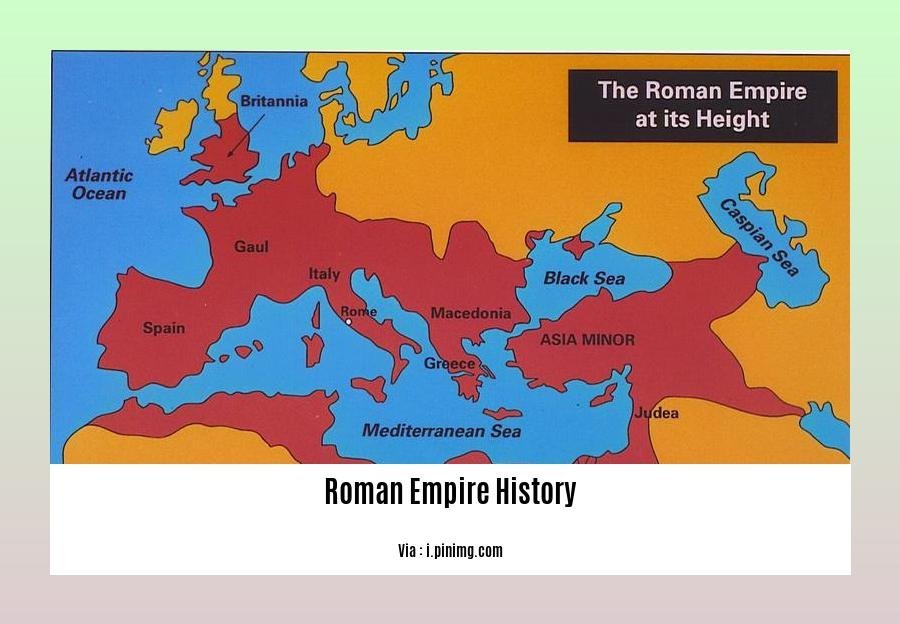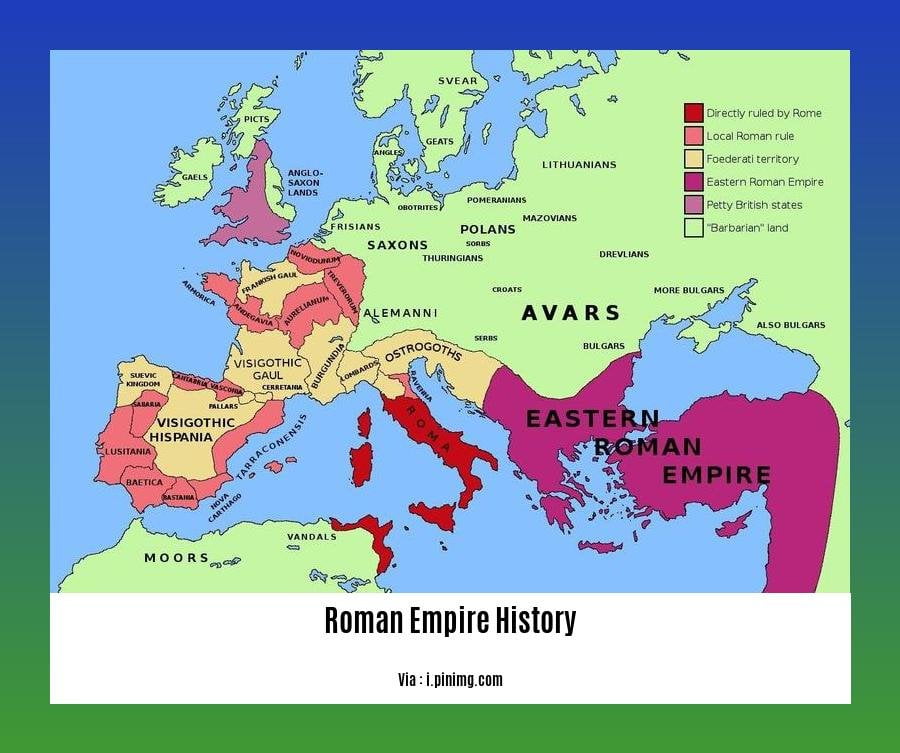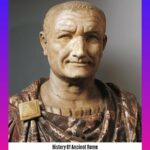[Roman Empire History: Uncovering the Intricacies of an Ancient Civilization] – Delve into the captivating history of the Roman Empire, an ancient civilization that left an indelible mark on the world.
Key Takeaways:
- Online tutoring provides personalized history instruction tailored to your needs and schedule.
- Tutors offer assistance with history homework, exam preparation, and the study of the Roman Empire.
- Learn about key periods in Roman history, including the fall of the Republic and the reign of the “Five Good Emperors.”
Roman Empire History

Origins and Foundation
The legendary founding of Rome, influenced by the Etruscans, marked the rise of the Roman Republic. Its political structure, shaped by the Punic Wars, paved the way for territorial expansion.
The Roman Empire Emerges
Julius Caesar’s ascent to power culminated in the establishment of the Roman Empire. Augustus’s reign ushered in the Pax Romana, a period of stability and prosperity. The empire’s vast territories stretched across continents.
Height of Power and Prosperity
Under the golden reign of Emperor Trajan, the Roman Empire reached its zenith. Literature, art, architecture, and engineering flourished. Trade, infrastructure, and communication boomed.
Decline and Fall
Internal divisions, economic disparities, and political instability weakened the empire. Christianity’s rise and external pressures from Germanic tribes contributed to its decline. The empire split into East and West.
Legacy and Impact
Roman law, government, language, and culture left an enduring legacy. Christianity spread under its influence, and classical knowledge was preserved. Architectural marvels and engineering achievements continue to inspire awe.
If you’re fascinated by the origins and growth of one of the world’s most influential empires, delve into the history of ancient Rome, where you’ll uncover the captivating story of its rise and fall.
Curious about the daily life, culture, and achievements of the Romans? Explore ancient Roman civilization to witness their remarkable contributions to architecture, engineering, and law.
Travel back in time to witness pivotal moments in Roman history by exploring rome historical events, from the founding of the Republic to the fall of the Western Empire.
Height of Power and Prosperity
The Roman Empire reached its zenith during the Height of Power and Prosperity. This era, marked by the reign of Emperor Trajan (98-117 CE), was a golden age of Roman civilization, characterized by advancements in literature, art, architecture, engineering, and trade.
Economic and Political Stability
A period of relative peace and stability allowed for economic growth and prosperity. Expanding trade routes brought wealth to the empire, while the development of infrastructure such as roads and aqueducts facilitated commerce and improved the standard of living for citizens.
Literature and Arts
The Height of Power and Prosperity witnessed a flourishing of literature and the arts. Poets like Virgil and Ovid crafted epic poems that celebrated Roman history and mythology. Art and architecture thrived, with the construction of iconic structures such as the Colosseum and the Pantheon.
Emperors and Innovations
Trajan, an exceptional military leader, expanded the empire’s borders to their greatest extent. His successor, Hadrian, consolidated Trajan’s conquests and focused on domestic reforms. These emperors patronized the arts and led infrastructure projects that transformed the Roman landscape.
Pax Romana
The Pax Romana (Roman Peace), a period of stability and prosperity, lasted for over two centuries. During this time, trade flourished, cities expanded, and the empire reached its peak of power and influence. The Pax Romana left a lasting legacy, shaping the political and cultural landscape of Europe.
Key Takeaways:
- Emperor Trajan’s reign marked the pinnacle of Roman power and prosperity.
- Economic growth and stability fostered advancements in literature, art, and architecture.
- The development of infrastructure and trade played a crucial role in the empire’s success.
- The Pax Romana brought peace and stability, allowing the empire to thrive.
- The Roman Empire’s legacy continues to influence Western civilization today.
Citation:
- “The Roman Empire: A Brief History.” Mississippi Public Museum,
Decline and Fall: Exploring the End of an Era

Have you ever pondered the reasons behind the decline and eventual fall of one of history’s most iconic civilizations? The Roman Empire, for centuries a beacon of power and progress, faced a multitude of internal and external challenges that ultimately led to its demise.
Decline and Fall:
The Roman Empire, once a vast and prosperous realm, began to experience internal divisions in the 3rd century CE. Economic disparities, political instability, and a shift away from traditional values weakened the empire from within.
Meanwhile, external pressures also mounted. Germanic tribes to the north and east pushed against the empire’s borders, while the rise of Christianity challenged the traditional Roman religious practices and social order.
In 476 CE, the last emperor of the Western Roman Empire, Romulus Augustulus, was overthrown, marking the official end of the Roman Empire in the West. The Eastern Roman Empire, centered in Constantinople, continued to exist for another千年, but eventually succumbed to internal strife and external invasions.
Key Takeaways:
- Internal division: The Roman Empire faced economic inequality, political instability, and a decline in traditional values.
- External pressures: Germanic tribes and the rise of Christianity posed threats to the empire’s borders and social order.
- A gradual decline: The Roman Empire did not collapse overnight but rather经历了a gradual decline over several centuries.
- A lasting legacy: Despite its fall, the Roman Empire’s influence on Western civilization continues to this day through its laws, language, and cultural achievements.
Source: Britannica, The Roman Empire
Legacy and Impact
The legacy and impact of the Roman Empire reverberate throughout history, shaping the foundations of Western civilization. Its enduring influence is a testament to the empire’s vast contributions to law, government, culture, and technology.
The Romans established a system of law that emphasized equality before the law and individual rights. Their legal innovations, such as the concept of habeas corpus and the presumption of innocence, remain cornerstones of modern legal systems.
The Roman government model, characterized by a separation of powers and a complex system of checks and balances, has served as an inspiration for democratic societies around the world. The Roman Senate and the popular assemblies provided a framework for representative government.
Roman culture was a vibrant tapestry of art, literature, and philosophy. Their literary works, such as those of Virgil and Horace, continue to be studied and admired today. Roman architectural marvels, including the Colosseum and the Pantheon, stand as testaments to their engineering prowess and artistic ingenuity.
Technology and Engineering were hallmarks of the Roman Empire. Their advancements in road construction, aqueducts, and concrete laid the groundwork for modern infrastructure. The invention of the arch and the development of sanitation systems revolutionized urban design.
Key Takeaways:
- The Roman legal system established the principle of equality before the law and individual rights.
- The Roman governmental model inspired democratic societies worldwide.
- Roman culture continues to influence art, literature, and philosophy.
- Roman technological and engineering advancements shaped urban design and infrastructure.
Citation:
FAQ
Q1: What were the key periods in Roman history?
A1: Notable eras include the Julio-Claudian Dynasty, the Flavian dynasty, and the period of the “Five Good Emperors.”
Q2: What is the significance of Constantine’s conversion to Christianity?
A2: Constantine’s conversion in 312 CE made Christianity the official religion of the empire, shaping its cultural and political landscape.
Q3: What factors contributed to the decline and fall of the Roman Empire?
A3: Edward Gibbon’s six-volume work, “The History of the Decline and Fall of the Roman Empire,” offers perspectives on the empire’s collapse, including internal instability, economic decline, and barbarian invasions.
Q4: How did the Romans influence modern governance and law?
A4: Roman innovations like the separation of government powers, the rule of law, and trial by jury have had a lasting impact on Western legal and political systems.
Q5: What technological advancements did the Romans make?
A5: The Romans were instrumental in developing concrete, roads, and other crucial technologies that continue to be used today, showcasing their engineering prowess.
- Star Ring Trends: Etsy vs Amazon - March 28, 2025
- Boost Pollinator Habitats: Baby Blue Eyes Sustainable Farming Guide - March 28, 2025
- Protect Big Black Bears: Effective Conservation Strategies - March 28, 2025
















